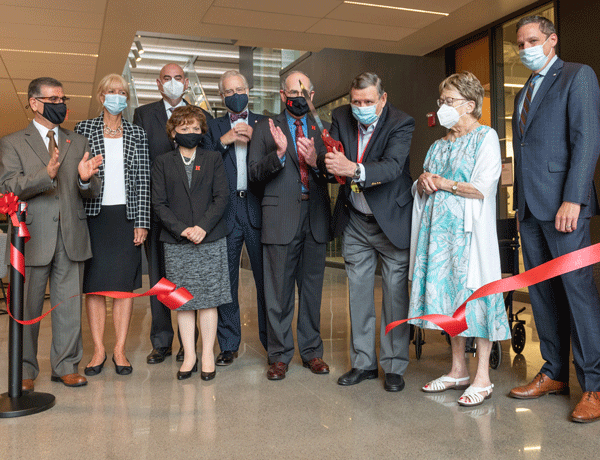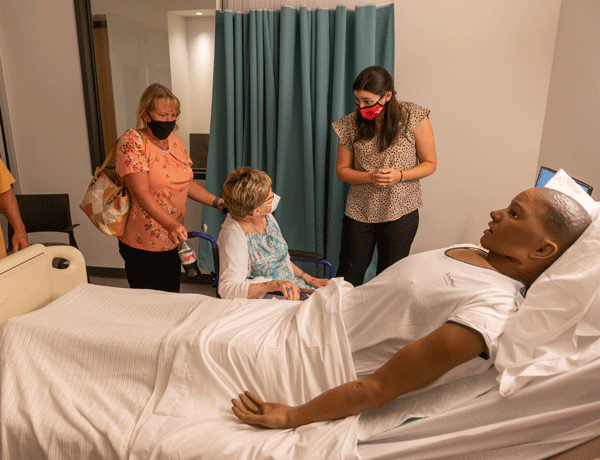UHart Celebrates the Opening of the Hursey Center

The University celebrated the opening of the Francis X. and Nancy Hursey Center for Advanced Engineering and Health Professions with a ribbon-cutting ceremony on Thursday, Sept. 9. The 60-thousand-square-foot academic building houses new, specialized, and technology-rich facilities to train future professionals in engineering and health care fields.
“For years, our state and our region have had a high need for workers with advanced skills in high-growth industries, including aerospace, nursing, robotics, and physical therapy,” said University Board Chair David Gordon. “With the opening of the Hursey Center, the University is now able to offer new and expanded programs to meet this demand.”
The Center is named in honor of alumnus Francis "Frank" Hursey and his wife, Nancy. It combines the Hurseys' lifelong passions of nursing and engineering. Nancy Hursey is a retired registered nurse. Frank Hursey is a recognized pioneer in pressure swing adsorption oxygen technology, was on the breathing air team of NASA’s Apollo Program, and currently holds about a dozen patents from his research and development efforts.
Francis "Frank" Hursey, A’73, ’77This project is the perfect way for me to say thank you to the University of Hartford. My education here was key to my success, and I would not have enjoyed the career I achieved without it. I was able to start my own company and grow it into a successful business - and I was able to achieve my goal of not punching a clock working for someone else! The University of Hartford helped make that possible.
Specialized Spaces

The Hursey Center is home to many laboratories and classrooms, including a health simulation suite and spaces dedicated to preparing future health professionals to assess, diagnose, and treat a myriad of conditions in new labs designed for motion analysis, human performance, strength and conditioning, health and physical assessment, and functional and physical rehabilitation.
Engineering and technology-focused facilities include spaces for robotics, 3D-printing, high-bay mechanical engineering, and cybersecurity labs, as well as research and maker spaces.